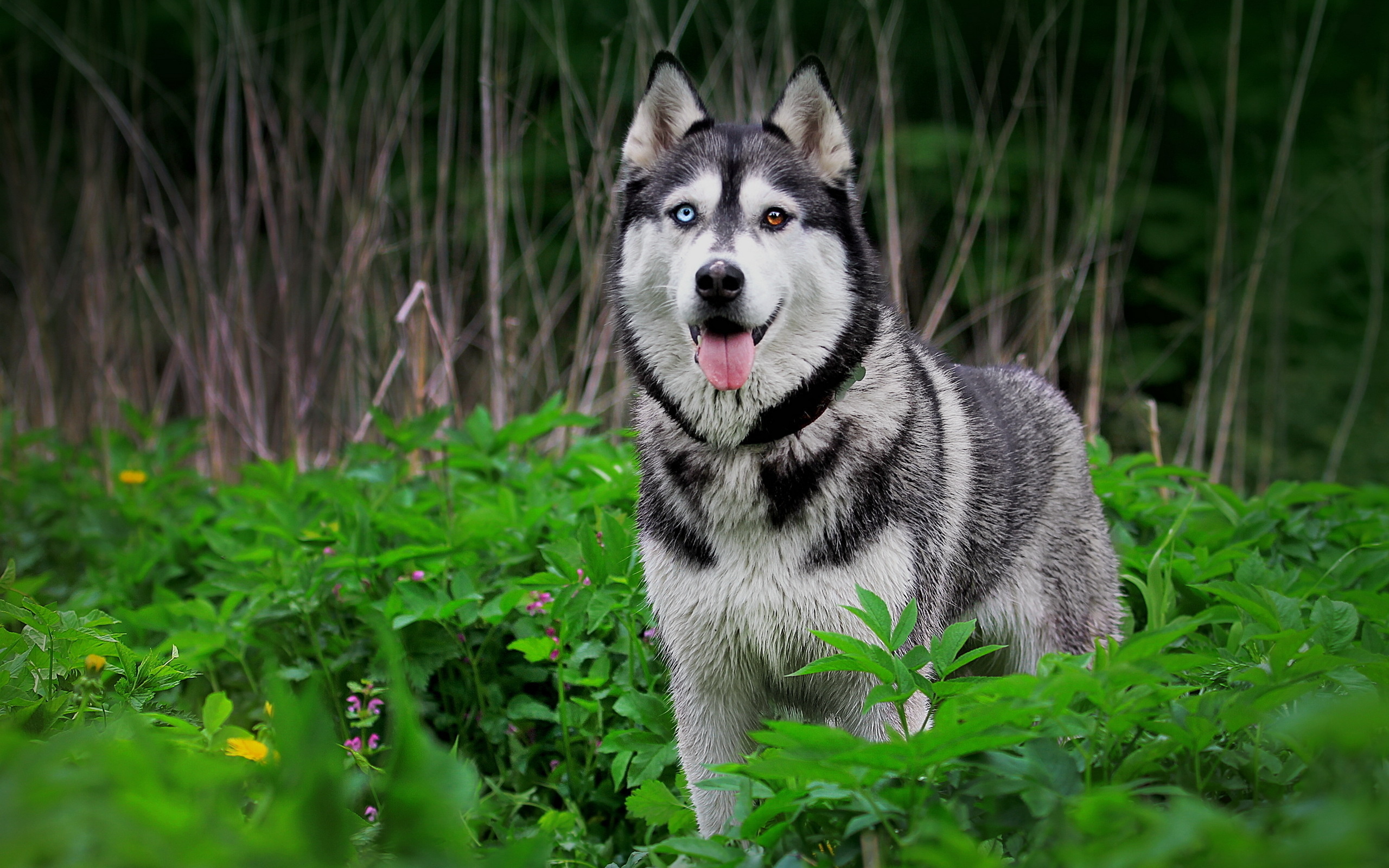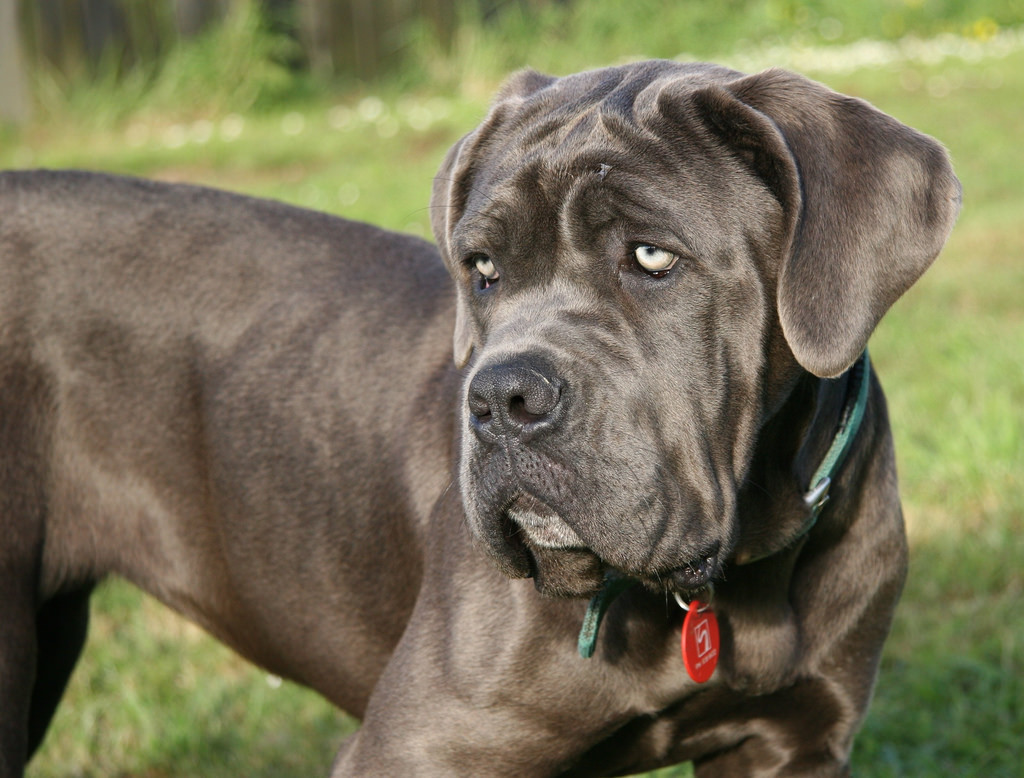Top Dangerous Dog Breeds
Almost all dogs can cause unimaginable damage and danger, but certain breeds are more prone to showing dangerous reactions and cause fatalities! These breeds should be the most attentive to, socialized and trained obedience so that they can live happily in various households and situations!
Here, List Of Top Dangerous Dogs
1. Rottweiler

The Rottweiler has a muscular, massive, powerful body. The head is broad with a rounded forehead. The muzzle is well developed. The teeth meet in a scissors bite. The wide nose is black. The lips are black and the inside of the mouth is dark. The medium-sized eyes are dark and almond shaped. Some Rottweilers have been known to have blue eyes or one blue and one brown eye. This trait is not recognized in the show world and does not meet the breed’s written standard. The ears are triangular and carried forward. The tail is customarily docked. Note: docking tails is illegal in most parts of Europe. Rear dewclaws are often removed. The chest is broad and deep. The coat is short, hard and thick. It is black with rust to mahogany markings on the cheeks, muzzle, paws and legs. A red color with brown markings also exists. There is a deficiency in the hair gene that makes the coloring a lighter red.
2. German Shepherd

German Shepherd dogs are known by their wolf-like appearance, strength, loyalty, and noble disposition. They were originally bred to herd sheep and protect flocks from danger, but German Shepherds are so much more than working dogs.
You might be surprised to learn just how companionable these dogs are. In addition to doing police work, you’re likely to find a German Shepherd following their owners on challenging adventures, learning tricks in obedience classes, and playing in the family backyard.
3. Doberman

The Doberman is well known as a brave guardian and noble Dog.
The Dobie is a relatively new breed compared to the ancestry of other canines. In the late 1800s, a German tax collector by the name of Louis Dobermann began to selectively breed a line of dogs to provide owner protection. As the story goes, Mr. Dobermann used his Dobies to protect him while traveling through bandit-filled territories. To this day, Dobies make excellent guard dogs and rarely need additional training in this area. While not usually outwardly aggressive, they do require proper socialization and training during puppyhood to teach them appropriate interaction behaviors. With encouragement, they make a wonderful addition to the family. Dobermans are intelligent, almost stealth-like, and have great stamina. Give her a job and lots of exercise and you’ll have a great friend for life!
4. Boxer

The Boxer's body is compact and powerful. The head is in proportion with the body. The muzzle is short and blunt with a distinct stop. The nose is large and black with very open nostrils. The jaw has an under bite. The eyes are dark brown. The ears are set high, either cropped or kept natural. When cropped they are trained to stand up on the head, tapering to a point. When left natural the ears are thin, falling forward, lying close to the head. The neck should be round, strong and muscular, without a dewlap. The muscular front legs are straight and parallel when viewed from the front. The back legs are well muscled. The tail is set high and usually docked. The AKC severely penalizes a natural tail, while most of Europe has outlawed this practice. Dewclaws are usually removed. The short, smooth, close-fitting coat comes in fawn, brindle, tan, mahogany and black often with white markings. Boxers also come in a white coat that cannot be registered with some clubs.
5. Siberian husky

The Siberian husky is a graceful, athletic dog with high endurance and an eagerness to work. This friendly dog breed, which originated in Northeast Asia as a sled dog, has a vivacious and mischievous personality. Though these are high-energy and sometimes intense dogs, huskies can be affectionate and gentle when given proper care. They were brought to America through Alaska.
6. Bullmastiff

A Bullmastiff is a tall, proud, courageous and yet one of the gentle giants of the canine world. With the bloodlines going back to the English Mastiff and the English Bull Dog, Bull Mastiffs were originated in the 19th century in England. Their fierce formidable appearance has made them a popular choice for Diamond Mine owners in Africa to keep Bullmastiffs as guard dogs for their prized Diamond Mines. Bullmastiffs fall in the category of dogs that bark very less. Even while on guard, they would not bite their prey but rather pin them down for as long as required. Bull mastiffs are confident and trustworthy dogs that make them excellent companions and great family dogs. They are also known to be the “Best Kissers” of the canine world.
7. Dalmatian

The Dalmatian is a large, strong, muscular dog. The skull is about as wide as it is long, and flat on the top. The muzzle is about the same length as the top of the skull. The stop is moderate but well defined. The nose can be black, brown (liver), blue or a dark gray that looks like black. The teeth meet in a scissors bite. The medium-sized round eyes are brown, blue or a combination of both. The ears are set high, hanging down, gradually tapering to a rounded tip. The chest is deep. The base of the tail is level with the topline and tapers to the tip. The feet are round with arched toes. Toenails are white and/or black in black-spotted dogs and brown and/or white in liver-spotted dogs. The short coat has fine dense hairs. The symmetrical coat is predominantly white with clearly defined round spots. The spots can be black or brown (liver) which are the preferred colors in the show ring, but can also be, lemon, dark blue, tricolored, brindled, solid white or sable. Not all of these colors are accepted into the show ring, but they do occur in the breed. The more defined and well distributed the markings are, the more valued the dog is to the show ring.
8. Bandog

The Bandog is an extremely intelligent dog. It is confident and very docile. Like all Mastiffs, they should have owners who are capable of staying dominant over the dogs. They are not usually recommended as good choices for first-time dog owners, because they need someone who truly understands canine instinct and how to properly communicate what it is you want from him. Although not bred as fighting dogs, if they are with a passive owner who does not know how to communicate aggression is not acceptable, they may become dog aggressive. Some people, mainly on the East Coast, still use this dog as a fighting dog. Luckily, there are more folks breeding these dogs for protection than for combat. As a protection dog, they are as a whole, excellent. They have a great deal of drive and are very tractable. The only temperament drawback to protection work is their unwillingness to perform the "bark" portion of the "bark and hold." As they are borne of fighting extraction, most dogs from this lineage do not bark as a warning; this is typically a difficult task. The American Bandog is a breed that loves attention and thrives on leadership. If you are not this dog’s 100% pack leader and/or if you do not provide enough mental and physical exercise it will become very upset when left alone and will be hard to control.
9. Bulldog

The Bulldog is a wide, medium-sized, compact dog with short legs. The body and head are massive with extra skin on both the skull and forehead falling in folds. The cheeks extend to the sides of the eyes. The muzzle is wide, short and pug with a broad, deep stop. The black nose is broad with large nostrils. The dark eyes are deep set. The rose ears are small, thin and set high on the head. The jaws are massive, very broad, and square with hanging upper lips. The teeth should have an under bite. The tail is either straight or screwed and carried low. The short, flat coat is straight, smooth and glossy. Coat colors include red brindle and other shades of brindle, solid white, solid red, fawn, fallow, piebald, pale yellow or washed-out red or white or a combination of these colors.
10. Great Dane

A Great Dane is truly a great dog breed–large and noble, commonly referred to as a gentle giant or as the “Apollo of dogs.” Apollo is the Greek god of the sun, the brightest fixture in the sky.
Great Danes certainly hold stature in the dog world; but though they look terribly imposing, in reality they’re one of the best-natured dogs around. For all of their size, Great Danes are sweet, affectionate pets. They love to play and are gentle with children.
Almost all dogs can cause unimaginable damage and danger, but certain breeds are more prone to showing dangerous reactions and cause fatalities! These breeds should be the most attentive to, socialized and trained obedience so that they can live happily in various households and situations! Here, List Of Top Dangerous Dogs
1. Rottweiler

The Rottweiler has a muscular, massive, powerful body. The head is broad with a rounded forehead. The muzzle is well developed. The teeth meet in a scissors bite. The wide nose is black. The lips are black and the inside of the mouth is dark. The medium-sized eyes are dark and almond shaped. Some Rottweilers have been known to have blue eyes or one blue and one brown eye. This trait is not recognized in the show world and does not meet the breed’s written standard. The ears are triangular and carried forward. The tail is customarily docked. Note: docking tails is illegal in most parts of Europe. Rear dewclaws are often removed. The chest is broad and deep. The coat is short, hard and thick. It is black with rust to mahogany markings on the cheeks, muzzle, paws and legs. A red color with brown markings also exists. There is a deficiency in the hair gene that makes the coloring a lighter red.
2. German Shepherd

German Shepherd dogs are known by their wolf-like appearance, strength, loyalty, and noble disposition. They were originally bred to herd sheep and protect flocks from danger, but German Shepherds are so much more than working dogs. You might be surprised to learn just how companionable these dogs are. In addition to doing police work, you’re likely to find a German Shepherd following their owners on challenging adventures, learning tricks in obedience classes, and playing in the family backyard.
3. Doberman

The Doberman is well known as a brave guardian and noble Dog. The Dobie is a relatively new breed compared to the ancestry of other canines. In the late 1800s, a German tax collector by the name of Louis Dobermann began to selectively breed a line of dogs to provide owner protection. As the story goes, Mr. Dobermann used his Dobies to protect him while traveling through bandit-filled territories. To this day, Dobies make excellent guard dogs and rarely need additional training in this area. While not usually outwardly aggressive, they do require proper socialization and training during puppyhood to teach them appropriate interaction behaviors. With encouragement, they make a wonderful addition to the family. Dobermans are intelligent, almost stealth-like, and have great stamina. Give her a job and lots of exercise and you’ll have a great friend for life!
4. Boxer

The Boxer's body is compact and powerful. The head is in proportion with the body. The muzzle is short and blunt with a distinct stop. The nose is large and black with very open nostrils. The jaw has an under bite. The eyes are dark brown. The ears are set high, either cropped or kept natural. When cropped they are trained to stand up on the head, tapering to a point. When left natural the ears are thin, falling forward, lying close to the head. The neck should be round, strong and muscular, without a dewlap. The muscular front legs are straight and parallel when viewed from the front. The back legs are well muscled. The tail is set high and usually docked. The AKC severely penalizes a natural tail, while most of Europe has outlawed this practice. Dewclaws are usually removed. The short, smooth, close-fitting coat comes in fawn, brindle, tan, mahogany and black often with white markings. Boxers also come in a white coat that cannot be registered with some clubs.
5. Siberian husky

The Siberian husky is a graceful, athletic dog with high endurance and an eagerness to work. This friendly dog breed, which originated in Northeast Asia as a sled dog, has a vivacious and mischievous personality. Though these are high-energy and sometimes intense dogs, huskies can be affectionate and gentle when given proper care. They were brought to America through Alaska.
6. Bullmastiff

A Bullmastiff is a tall, proud, courageous and yet one of the gentle giants of the canine world. With the bloodlines going back to the English Mastiff and the English Bull Dog, Bull Mastiffs were originated in the 19th century in England. Their fierce formidable appearance has made them a popular choice for Diamond Mine owners in Africa to keep Bullmastiffs as guard dogs for their prized Diamond Mines. Bullmastiffs fall in the category of dogs that bark very less. Even while on guard, they would not bite their prey but rather pin them down for as long as required. Bull mastiffs are confident and trustworthy dogs that make them excellent companions and great family dogs. They are also known to be the “Best Kissers” of the canine world.
7. Dalmatian

The Dalmatian is a large, strong, muscular dog. The skull is about as wide as it is long, and flat on the top. The muzzle is about the same length as the top of the skull. The stop is moderate but well defined. The nose can be black, brown (liver), blue or a dark gray that looks like black. The teeth meet in a scissors bite. The medium-sized round eyes are brown, blue or a combination of both. The ears are set high, hanging down, gradually tapering to a rounded tip. The chest is deep. The base of the tail is level with the topline and tapers to the tip. The feet are round with arched toes. Toenails are white and/or black in black-spotted dogs and brown and/or white in liver-spotted dogs. The short coat has fine dense hairs. The symmetrical coat is predominantly white with clearly defined round spots. The spots can be black or brown (liver) which are the preferred colors in the show ring, but can also be, lemon, dark blue, tricolored, brindled, solid white or sable. Not all of these colors are accepted into the show ring, but they do occur in the breed. The more defined and well distributed the markings are, the more valued the dog is to the show ring.
8. Bandog

The Bandog is an extremely intelligent dog. It is confident and very docile. Like all Mastiffs, they should have owners who are capable of staying dominant over the dogs. They are not usually recommended as good choices for first-time dog owners, because they need someone who truly understands canine instinct and how to properly communicate what it is you want from him. Although not bred as fighting dogs, if they are with a passive owner who does not know how to communicate aggression is not acceptable, they may become dog aggressive. Some people, mainly on the East Coast, still use this dog as a fighting dog. Luckily, there are more folks breeding these dogs for protection than for combat. As a protection dog, they are as a whole, excellent. They have a great deal of drive and are very tractable. The only temperament drawback to protection work is their unwillingness to perform the "bark" portion of the "bark and hold." As they are borne of fighting extraction, most dogs from this lineage do not bark as a warning; this is typically a difficult task. The American Bandog is a breed that loves attention and thrives on leadership. If you are not this dog’s 100% pack leader and/or if you do not provide enough mental and physical exercise it will become very upset when left alone and will be hard to control.
9. Bulldog

The Bulldog is a wide, medium-sized, compact dog with short legs. The body and head are massive with extra skin on both the skull and forehead falling in folds. The cheeks extend to the sides of the eyes. The muzzle is wide, short and pug with a broad, deep stop. The black nose is broad with large nostrils. The dark eyes are deep set. The rose ears are small, thin and set high on the head. The jaws are massive, very broad, and square with hanging upper lips. The teeth should have an under bite. The tail is either straight or screwed and carried low. The short, flat coat is straight, smooth and glossy. Coat colors include red brindle and other shades of brindle, solid white, solid red, fawn, fallow, piebald, pale yellow or washed-out red or white or a combination of these colors.
10. Great Dane

A Great Dane is truly a great dog breed–large and noble, commonly referred to as a gentle giant or as the “Apollo of dogs.” Apollo is the Greek god of the sun, the brightest fixture in the sky. Great Danes certainly hold stature in the dog world; but though they look terribly imposing, in reality they’re one of the best-natured dogs around. For all of their size, Great Danes are sweet, affectionate pets. They love to play and are gentle with children.



























Login to your account or create a new account to post comments!